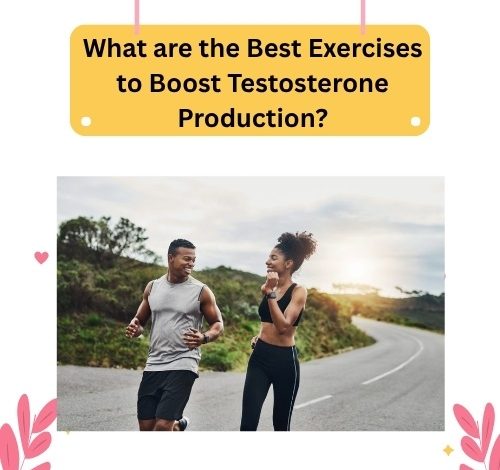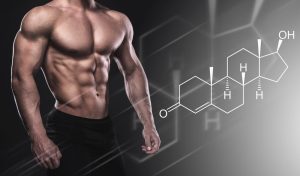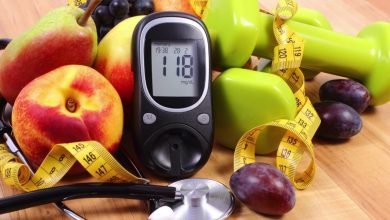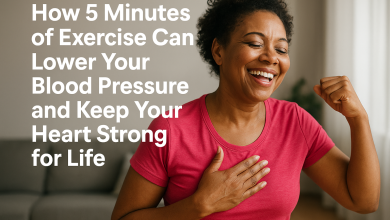What are the Best Exercises to Boost Testosterone Production?

Testosterone is a hormone that plays a vital role in men’s health. From muscle growth and fat distribution to libido and mood regulation, testosterone is central to physical and mental performance. But as men age—especially after 30—testosterone levels tend to decline gradually. This has sparked global interest in natural ways to boost testosterone, and exercise is one of the most effective strategies.
The best exercises to boost testosterone, backed by science, expert opinion, and practical tips. Whether you’re a beginner or a seasoned gym-goer, these exercise routines can help you optimize your hormonal health and overall vitality.
Why Testosterone Matters
Before diving into workouts, it’s important to understand what testosterone does and why optimizing it naturally matters.

Functions of Testosterone:
- Increases muscle mass and strength
- Enhances bone density
- Regulates fat distribution
- Supports libido and sexual health
- Improves mood, energy, and motivation
Low testosterone—often referred to as “Low T”—can lead to:
- Fatigue and depression
- Decreased muscle mass
- Increased body fat
- Erectile dysfunction
- Reduced cognitive function
While medications like testosterone replacement therapy (TRT) exist, lifestyle changes—especially exercise—can help naturally boost levels without side effects.
How Exercise Impacts Testosterone
Scientific studies show a clear relationship between physical activity and testosterone. Short-term increases in testosterone occur right after exercise, especially with high-intensity workouts. Long-term gains happen when you build lean muscle and reduce fat mass, both of which influence hormonal balance.
However, not all exercise is created equal. To maximize testosterone naturally, you need to follow a specific approach.
1. Resistance Training (Weight Lifting)
Hands down, resistance training tops the list of the best exercises to boost testosterone.
Why it Works:
- Increases lean muscle mass, which triggers hormonal production
- Promotes fat loss, especially visceral fat which inhibits testosterone
- Stimulates testosterone release post-workout
How to Do It:
- Focus on compound movements: squats, deadlifts, bench press, overhead press, and rows
- Train large muscle groups (legs, back, chest)
- Lift heavy weights with lower reps (4–8 reps per set, 3–5 sets)
- Rest 60–90 seconds between sets
Weekly Plan Example:
| Day | Focus |
| Monday | Chest & Triceps (Bench Press, Dips) |
| Wednesday | Legs (Squats, Lunges, Deadlifts) |
| Friday | Back & Shoulders (Rows, Pull-ups, Overhead Press) |
Research from the Journal of Strength and Conditioning Research shows that men who follow a consistent weightlifting program can see up to a 20% increase in testosterone over time.
2. High-Intensity Interval Training (HIIT)
Next on the list of the best exercises to boost testosterone is HIIT.
Why it Works:
- Triggers acute testosterone spikes
- Burns fat quickly, especially belly fat
- Requires less time than steady-state cardio
- Increases growth hormone, which synergizes with testosterone
HIIT Workout Example (20 minutes):
- 30 seconds of sprinting
- 90 seconds walking (recovery)
- Repeat 6–8 rounds
Tips:
- Use a treadmill, bike, or just sprint outdoors
- Perform HIIT 2–3 times per week
- Avoid overdoing it—excessive cardio may reduce testosterone
A study published in European Journal of Applied Physiology found that HIIT significantly increases total and free testosterone levels compared to moderate-intensity cardio.
3. Sprinting
Yes—simple sprinting is one of the best exercises to boost testosterone for men.
Why it Works:
- Similar hormonal benefits to HIIT
- Engages fast-twitch muscle fibers
- Enhances natural anabolic hormones
Sprint Workout Plan:
- Warm-up for 5–10 minutes (jogging, dynamic stretches)
- Perform 6 x 40-meter sprints at full effort
- Rest for 90 seconds between sprints
Perform this twice a week for maximum effect. A study in the Journal of Endocrinological Investigation showed that short bouts of sprinting increase testosterone for up to 30 minutes post-exercise.
4. Bodyweight Training (with Progressive Overload)
Calisthenics (bodyweight training) like push-ups, pull-ups, and dips can be effective when intensity and progression are maintained.
Why it Works:
- Builds muscle and strength
- Encourages consistent training
- Can be done anywhere
Best Bodyweight Exercises for Testosterone:
- Pull-ups (target lats, arms)
- Push-ups (chest, shoulders)
- Squats and lunges (legs)
- Planks (core stabilization)
- Dips (triceps, chest)
Make It Progressive:
- Add weighted vests or resistance bands
- Increase reps and sets
- Perform circuit-style training
5. Leg Training (Specifically Squats & Deadlifts)
Leg day isn’t just about building strong thighs—it’s also critical for testosterone.
Why Leg Workouts Matter:
- Legs are your largest muscle group
- Training them releases more testosterone than small muscle groups
- Stimulates systemic hormonal response
Best Testosterone-Boosting Leg Exercises:
- Barbell Back Squat
- Deadlift
- Walking Lunges
- Leg Press
A 2016 study in Endocrine Connections confirmed that lower-body resistance exercise stimulates a more significant testosterone increase than upper-body training.
6. Olympic Lifts (For Advanced Lifters)
If you’re experienced in the gym, Olympic-style lifts like clean and jerk or snatch can deliver powerful hormonal boosts.
Benefits:
- Combine strength, speed, and power
- Engage full-body musculature
- Require mental focus and coordination
These lifts aren’t for beginners but are highly anabolic. Always practice good form or work with a coach to avoid injury.
7. Active Recovery and Mobility Work
While high-intensity workouts boost testosterone, recovery plays an equally critical role.
Why Recovery Matters:
- Overtraining raises cortisol (a testosterone-killing hormone)
- Poor sleep and stress reduce testosterone levels
- Recovery enhances your gains
Recovery Exercises:
- Yoga or deep stretching (2x/week)
- Foam rolling
- Light walking or swimming
- Breathing exercises or meditation
Balance your testosterone-boosting workouts with rest and recovery days to avoid burnout and hormonal crash.
Bonus Tips to Maximize Testosterone from Exercise
1. Don’t Overdo Cardio
While some aerobic exercise is heart-healthy, too much long-duration cardio (like running marathons) can reduce testosterone. Focus on sprinting or HIIT instead.
2. Train in the Afternoon
Some studies suggest testosterone levels naturally peak in the late afternoon. Training during this time may align with your hormonal rhythm.
3. Fuel Your Workouts
Eat enough healthy fats, proteins, and carbs to support testosterone production. Essential nutrients include:
- Zinc (from red meat, seeds)
- Vitamin D (from sunlight or supplements)
- Omega-3s (from fatty fish or flaxseed)
4. Get Quality Sleep
Sleep is the foundation of hormone health. Aim for 7–9 hours of quality sleep nightly. Testosterone production peaks during REM sleep.
Exercises to Avoid (or Modify)
Not every form of exercise helps testosterone. In fact, some can harm it if done excessively or without recovery:
| Exercise | Risk to Testosterone |
| Marathon running | Increases cortisol, reduces muscle mass |
| Excessive spinning/biking | Potential hormonal suppression |
| Chronic overtraining | Lowers testosterone due to stress load |
Stick to the best exercises to boost testosterone and ensure you’re recovering adequately.
Real-Life Success Story
Ali, 38, began a structured resistance training and sprinting program after experiencing fatigue and low libido. After 12 weeks:
- Body fat dropped from 24% to 18%
- Lean muscle increased
- Energy and mood improved significantly
- Blood tests showed a 15% increase in total testosterone
His program included:
- 3x/week weight training
- 2x/week sprint sessions
- 1 recovery day with yoga
The takeaway? Consistency and structure matter.
Final Thoughts
If you’re looking for the best exercises to boost testosterone, focus on:
- Compound resistance training
- High-intensity intervals and sprints
- Leg-day and full-body workouts
- Recovery-enhancing mobility and rest
Avoid excessive cardio, manage stress, sleep well, and support your workouts with proper nutrition. With discipline and the right training plan, you can naturally enhance your testosterone, boost energy, and improve quality of life—without pills or injections.




